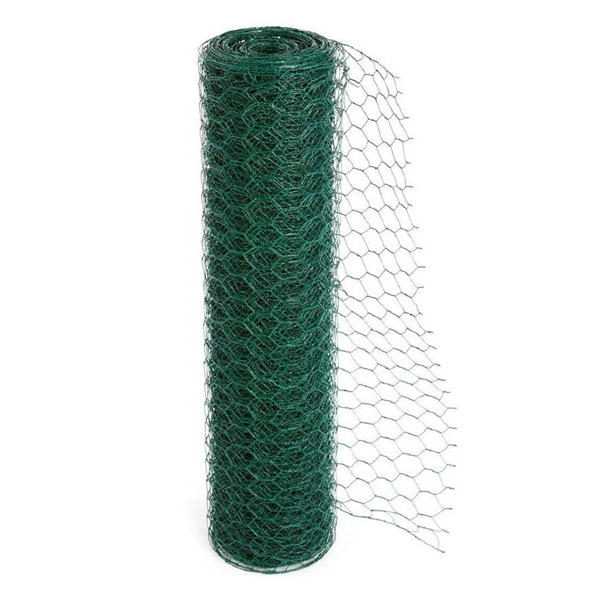Nov . 16, 2024 20:42 Back to list
6x6 reinforcing mesh
Understanding 6x6 Reinforcing Mesh Essential Insights for Construction
Reinforcement is a crucial aspect of construction and civil engineering, ensuring the structural integrity and longevity of structures. Among various reinforcement materials, 6x6 reinforcing mesh has gained prominence for its effectiveness and versatility in a range of applications. This article will delve into what 6x6 reinforcing mesh is, its specifications, uses, benefits, and factors to consider during selection and installation.
What is 6x6 Reinforcing Mesh?
6x6 reinforcing mesh refers to welded wire fabric composed of a grid of steel bars (wires) that are arranged in a rectangular lattice pattern. The 6x6 designation indicates that the mesh features wire spacing of 6 inches apart both vertically and horizontally, creating a robust framework for concrete applications. This mesh typically comprises varying diameters of wires, depending on the required strength and application.
Specifications and Variants
The commonly used wire diameters for 6x6 mesh vary from 10 gauge to 6 gauge, depending on the structural requirements. The mesh is available in different grades and is manufactured according to industry standards, such as ASTM A185 or A497, which ensure quality and performance.
While 6x6 is a standard mesh size, several variants exist to cater to specific engineering needs. For instance, some variations use a higher diameter wire for better tensile strength or different spacing for unique load-bearing requirements.
Applications
The versatility of 6x6 reinforcing mesh allows its application in various construction projects. It is predominantly used for
1. Slabs on Grade This includes driveways, sidewalks, and floors, where the mesh enhances the tensile strength of the concrete, mitigating the risk of cracking. 2. Pavements 6x6 mesh is often incorporated into pavement construction, where it helps manage stresses caused by traffic loads.
3. Walls The mesh serves to stabilize concrete walls, especially in structures with high wind loads or seismic activity.
4. Structural Reinforcement In larger construction projects, 6x6 mesh is used to strengthen beams, slabs, and other structural components.
Benefits
6x6 reinforcing mesh

Using 6x6 reinforcing mesh comes with numerous benefits
- Improved Crack Control The mesh provides excellent support to the concrete, reducing the potential for cracking as it expands and contracts with temperature changes.
- Cost-Effective Compared to other reinforcement methods, using mesh can lower material costs and labor expenses, as it is quick to install.
- Ease of Handling The mesh sheets are relatively lightweight and easy to transport and place, speeding up the construction process.
- Uniformity and Strength The welded design ensures that the reinforcement is evenly distributed throughout the concrete, contributing to uniform structural strength.
Factors to Consider
When selecting and installing 6x6 reinforcing mesh, several factors should be considered
1. Load Requirements Evaluate the loads that the concrete structure will bear and select the appropriate wire diameter and mesh spacing accordingly.
2. Environmental Conditions For areas prone to corrosion, consider using coated orGalvanized mesh to enhance durability.
3. Installation Practices Ensure proper scheduling of the mesh within the concrete mix, maintaining the correct cover as per engineering guidelines to avoid exposure and corrosion.
4. Regulatory Standards Always adhere to local building codes and regulations, which may dictate specific requirements for reinforcement materials.
Conclusion
In conclusion, 6x6 reinforcing mesh is an integral component in modern construction, offering a blend of strength, versatility, and cost-effectiveness. By understanding its applications, benefits, and installation considerations, construction professionals can ensure that their projects meet structural demands while maintaining safety and durability. As the field of engineering continues to evolve, the importance of reliable reinforcing methods like 6x6 mesh remains ever crucial in delivering resilient infrastructure.
-
High-Quality Steel Grating Solutions for Industrial Applications | Durable, Safety, Customization
NewsJul.13,2025
-
Advanced Solutions-CompanyX|Enterprise Efficiency&Cost Reduction
NewsJul.13,2025
-
Sustainable Manufacturing-EcoTech Innovations|Waste-to-Energy System&Zero Emissions
NewsJul.13,2025
-
Welded Wire Mesh- Buildings Wiremesh Co., Ltd.|Durable Construction Material&Industrial Strength Solution
NewsJul.13,2025
-
Smart Production Solutions-Example Corp|AI Automation&IoT Monitoring
NewsJul.13,2025
-
Advanced Industrial Solutions-Advanced Industrial Solutions|Manufacturing Efficiency&Productivity
NewsJul.13,2025

